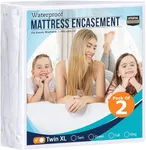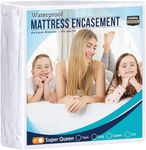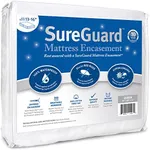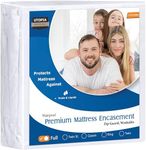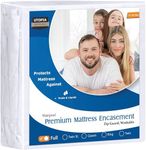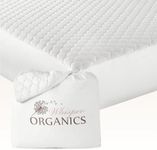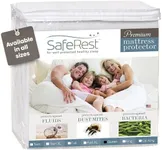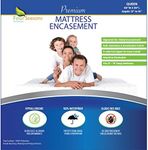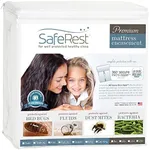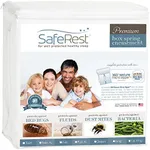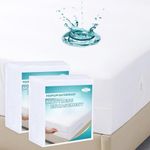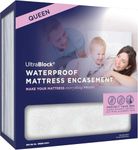Buying Guide for the Best Dust Mite Mattress Protector
Choosing the right dust-mite mattress protector is essential for maintaining a clean and healthy sleeping environment, especially if you suffer from allergies or asthma. A good mattress protector will not only shield your mattress from dust mites but also from spills, stains, and other allergens. Here are some key specifications to consider when selecting a dust-mite mattress protector to ensure you get the best fit for your needs.MaterialThe material of the mattress protector is crucial as it determines comfort, breathability, and effectiveness in blocking dust mites. Common materials include cotton, polyester, and blends. Cotton is soft and breathable, making it comfortable for sleeping, but may not be as effective in blocking dust mites unless it has a special weave or treatment. Polyester and blends are often more durable and can be treated to be dust-mite proof. Choose a material that balances comfort and protection based on your personal preferences and needs.
Allergen BarrierAn allergen barrier is a feature that prevents dust mites and other allergens from penetrating the mattress protector. This is typically achieved through a tightly woven fabric or a special coating. The effectiveness of the allergen barrier is measured by the pore size, with smaller pores providing better protection. Look for protectors with pore sizes of 10 microns or less for optimal dust mite prevention. If you have severe allergies, prioritize a protector with a proven allergen barrier.
WaterproofingWaterproofing is an important feature if you want to protect your mattress from spills, stains, and bodily fluids. Waterproof mattress protectors have a layer of material, such as polyurethane, that prevents liquids from seeping through. While waterproofing adds an extra layer of protection, it can sometimes reduce breathability and comfort. If you need waterproofing, look for protectors that balance protection with breathability, often labeled as 'breathable waterproof.'
Fit and SizeThe fit and size of the mattress protector are essential to ensure it stays in place and provides full coverage. Mattress protectors come in various sizes to match standard mattress dimensions (twin, full, queen, king, etc.). Additionally, consider the depth of your mattress, including any toppers, to ensure the protector fits snugly. Some protectors have deep pockets or elasticized edges to accommodate thicker mattresses. Measure your mattress before purchasing to ensure a proper fit.
BreathabilityBreathability refers to how well air can circulate through the mattress protector, which affects sleeping comfort. A breathable protector helps regulate temperature and prevents overheating during the night. Materials like cotton and certain polyester blends are known for their breathability. If you tend to sleep hot or live in a warm climate, prioritize a breathable mattress protector to ensure a comfortable night's sleep.
Ease of CleaningEase of cleaning is an important consideration for maintaining hygiene and prolonging the life of your mattress protector. Most protectors are machine washable, but it's important to check the care instructions for specific washing and drying guidelines. Some protectors can be washed at high temperatures to kill dust mites, while others may require gentle cycles. Choose a protector that fits your cleaning routine and preferences to ensure it remains effective and fresh.
Noise LevelThe noise level of a mattress protector can affect your sleep quality. Some protectors, especially those with waterproof layers, can be noisy and crinkly. Look for protectors that are labeled as 'quiet' or 'silent' to ensure they do not disrupt your sleep. Materials like cotton and certain polyester blends tend to be quieter. If you are a light sleeper, prioritize a low-noise protector to maintain a peaceful sleeping environment.

